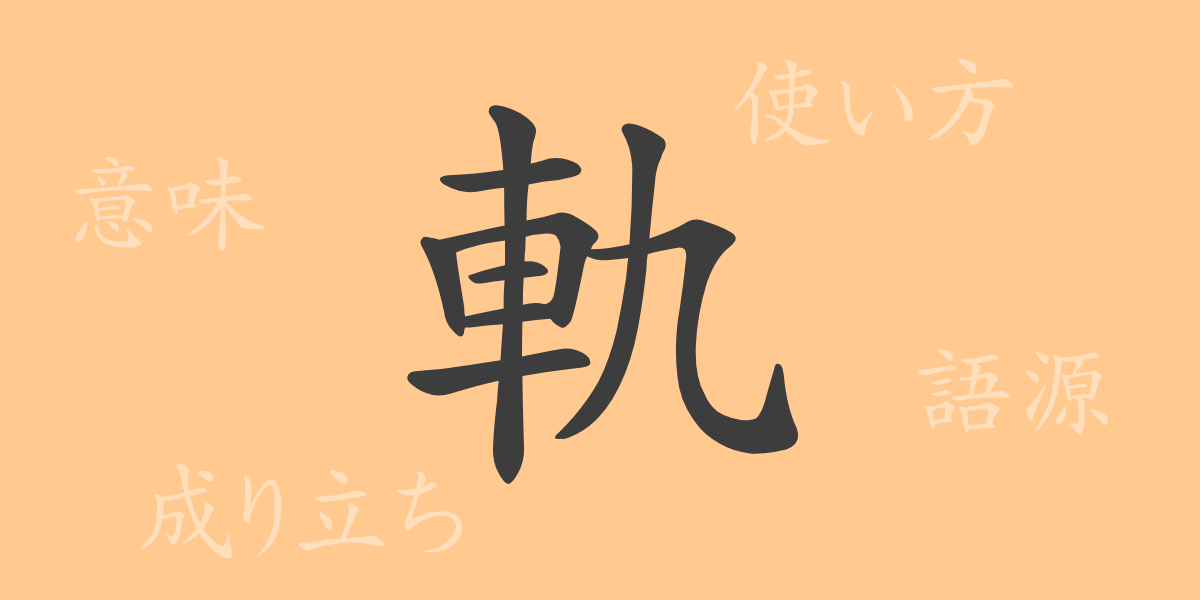Language is a key to tracing the path of culture, and the meaning embedded in a single kanji character can reflect a nation’s history and philosophy like a mirror. The Japanese kanji “軌” (き, ki) is no exception, as its form and meaning are deeply connected to the spirituality and behavioral patterns of the Japanese people. This article delves into the multifaceted aspects of the character “軌” (き, ki), exploring its origins and contemporary usage.
The Origin (Etymology) of 軌 (き, ki)
The kanji “軌” (き, ki) was born in ancient China and originally meant the ruts left by a cart’s wheels. These ruts, which guided subsequent carts on the path to follow, came to represent “norms” and “standards”. From following the same track, it also became a term to describe the progression and development of things.
The Meaning and Usage of 軌 (き, ki)
The character “軌” (き, ki) is mainly used to signify “pathway,” “norm,” and “standard.” Specifically, it represents the correct path that things should follow, the rules that actions and thoughts should adhere to, and a measure of standard. Expressions like “軌を一にする” (きをいつにする, ki wo itsu ni suru) and “軌を乱す” (きをみだす, ki wo midasu) use “軌” (き, ki) to mean adhering to or breaking a certain rule or order.
Readings, Stroke Count, and Radical of 軌 (き, ki)
As a common kanji in Japan, “軌” (き, ki) is taught in school education regarding its readings and structure.
- Readings: The on’yomi (Sino-Japanese reading) is “キ” (ki), and there is no particular kun’yomi (native Japanese reading).
- Stroke Count: It has a total of nine strokes.
- Radical: It belongs to the “車部” (しゃへん, sha-hen) or the vehicle radical.
Idioms, Phrases, and Proverbs Using 軌 (き, ki) and Their Meanings
There are numerous idioms, phrases, and proverbs that include the character “軌” (き, ki), each telling a story about the richness of the Japanese language. Here are a few examples:
- 正軌を復する (せいきをふっする, seiki wo fukusuru): To return to the right path after going astray.
- 軌を一にする (きをいつにする, ki wo itsu ni suru): To be in agreement in actions or thoughts.
- 軌跡を辿る (きせきをたどる, kiseki wo tadoru): To follow the path of past actions or the course of history.
Conclusion on 軌 (き, ki)
The commonly used kanji “軌” (き, ki), like the ruts it is associated with, signifies the pathways of our lives and thoughts. This character has functioned as a norm for people’s actions and philosophies from ancient times to the present day, playing a significant role in the Japanese language. Although it is not often seen in daily life, “軌” (き, ki) carries deep meaning in the contexts and situations where it is used.

























